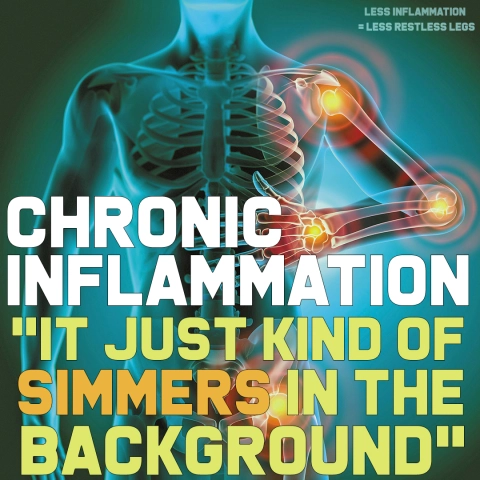
You’ve almost certainly heard the phrase: chronic inflammation. But many of us have a hazy understanding of what it means.
Simply put, this ongoing immune-system reaction can be a symptom of autoimmune and other serious illnesses. But it also plays a role in the disease process of many life-threatening conditions.
In fact, more than 50% of all deaths worldwide are attributed to chronic inflammatory diseases, including cancer, cardiovascular disease, dementia, stroke and diabetes.
Dr. Ketan Amin, a physician with Novant Health Medicine says “It just kind of smolders in the background.”
That’s why it’s so important to know the signs of CHRONIC INFLAMMATION and what to do if you notice them. And rest assured, you are not powerless against chronic inflammation.
What is Chronic Inflammation
Chronic inflammation occurs when the body starts or continues sending out inflammatory cells and substances, even though there is no infection or injury. Because this happens internally, the signs of chronic inflammation are subtler, and can increase gradually over a long period.
Why is chronic inflammation dangerous?
Because the signs are difficult to spot, many people don’t find out chronic inflammation is a problem for them until they are diagnosed with a serious illness.
“People may not even realize they have an inflammatory condition, because it’s a subtle change that occurs over weeks, months and even years. So they’re just dealing with the symptoms, like fatigue, every day — and, day after day, it gets a little bit worse.”
Left unaddressed, chronic inflammation can damage healthy cells, tissues and organs, and may cause internal scarring, tissue death and damage to the DNA in previously healthy cells. Ultimately, this can lead to the development of potentially disabling or life-threatening illnesses, such as cancer or Type-2 diabetes.
What causes chronic inflammation?
Certain lifestyle factors make you more prone to developing chronic inflammation that can lead to disease, including:
- Eating a diet high in added sugars, refined carbohydrates, processed or fried foods and unhealthy fats.
- Drinking alcohol in excess (more than one or two servings a day) or smoking cigarettes.
- Being obese (fat tissues release inflammatory substances).
- Living with chronic stress, including social stressors like isolation, rejection and loss.
- Having irregular sleep patterns.
Unfortunately, simply aging can put us at risk of increased chronic inflammation, possibly due to a lifetime’s exposure to pollutants and toxins, or an increase in visceral (belly) fat.
“Some level of baseline inflammation is unavoidable as you age, but it can be reduced in otherwise healthy individuals,” Amin said. “If you follow certain healthy life strategies, (like those below,) then you’ll likely be better off than those who don’t.”
How can you tell if you have chronic inflammation?
Because it occurs internally, the symptoms may not be noticeable at first. Some of the most common signs of chronic inflammation include:
- Body discomfort, including joint stiffness, tendonitis and muscle pain.
- Sleep disorders like insomnia, sleep apnea and persistent fatigue.
- Weight gain or unexplained weight loss.
- Skin rashes like psoriasis and frequent infections (viruses, etc.).
- Abdominal pain, acid reflux and other digestive system issues.
- Unexplained fever.
- Mood disorders, including depression and anxiety.
This article was courtesy of Novant Health
Leave a comment